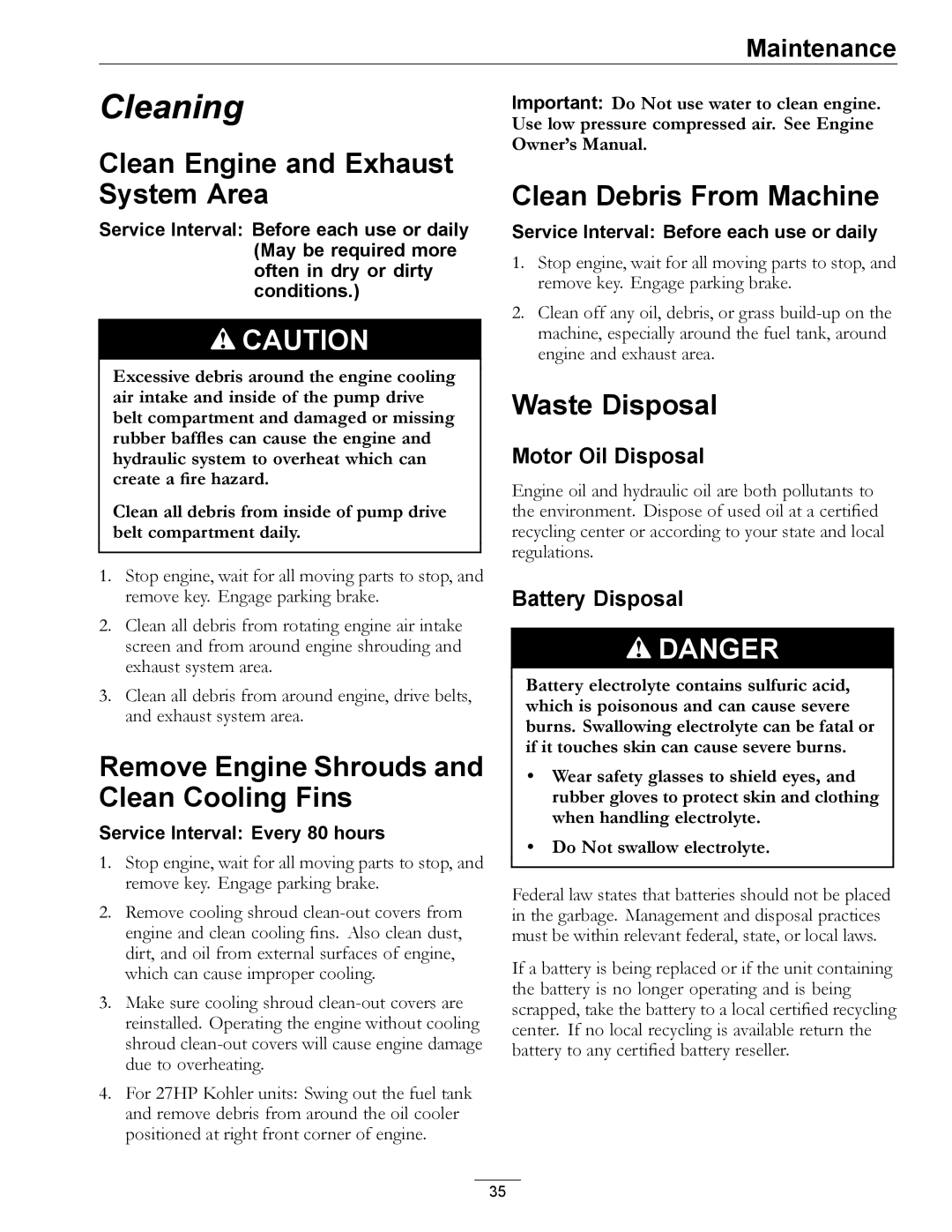
Maintenance
Cleaning
Clean Engine and Exhaust System Area
Service Interval: Before each use or daily (May be required more often in dry or dirty conditions.)
![]() CAUTION
CAUTION
Excessive debris around the engine cooling air intake and inside of the pump drive belt compartment and damaged or missing rubber baffles can cause the engine and hydraulic system to overheat which can create a fire hazard.
Clean all debris from inside of pump drive belt compartment daily.
1.Stop engine, wait for all moving parts to stop, and remove key. Engage parking brake.
2.Clean all debris from rotating engine air intake screen and from around engine shrouding and exhaust system area.
3.Clean all debris from around engine, drive belts, and exhaust system area.
Remove Engine Shrouds and Clean Cooling Fins
Service Interval: Every 80 hours
1.Stop engine, wait for all moving parts to stop, and remove key. Engage parking brake.
2.Remove cooling shroud
3.Make sure cooling shroud
4.For 27HP Kohler units: Swing out the fuel tank and remove debris from around the oil cooler positioned at right front corner of engine.
Important: Do Not use water to clean engine. Use low pressure compressed air. See Engine Owner’s Manual.
Clean Debris From Machine
Service Interval: Before each use or daily
1.Stop engine, wait for all moving parts to stop, and remove key. Engage parking brake.
2.Clean off any oil, debris, or grass
Waste Disposal
Motor Oil Disposal
Engine oil and hydraulic oil are both pollutants to the environment. Dispose of used oil at a certified recycling center or according to your state and local regulations.
Battery Disposal
![]() DANGER
DANGER
Battery electrolyte contains sulfuric acid, which is poisonous and can cause severe burns. Swallowing electrolyte can be fatal or if it touches skin can cause severe burns.
•Wear safety glasses to shield eyes, and rubber gloves to protect skin and clothing when handling electrolyte.
•Do Not swallow electrolyte.
Federal law states that batteries should not be placed in the garbage. Management and disposal practices must be within relevant federal, state, or local laws.
If a battery is being replaced or if the unit containing the battery is no longer operating and is being scrapped, take the battery to a local certified recycling center. If no local recycling is available return the battery to any certified battery reseller.
35
